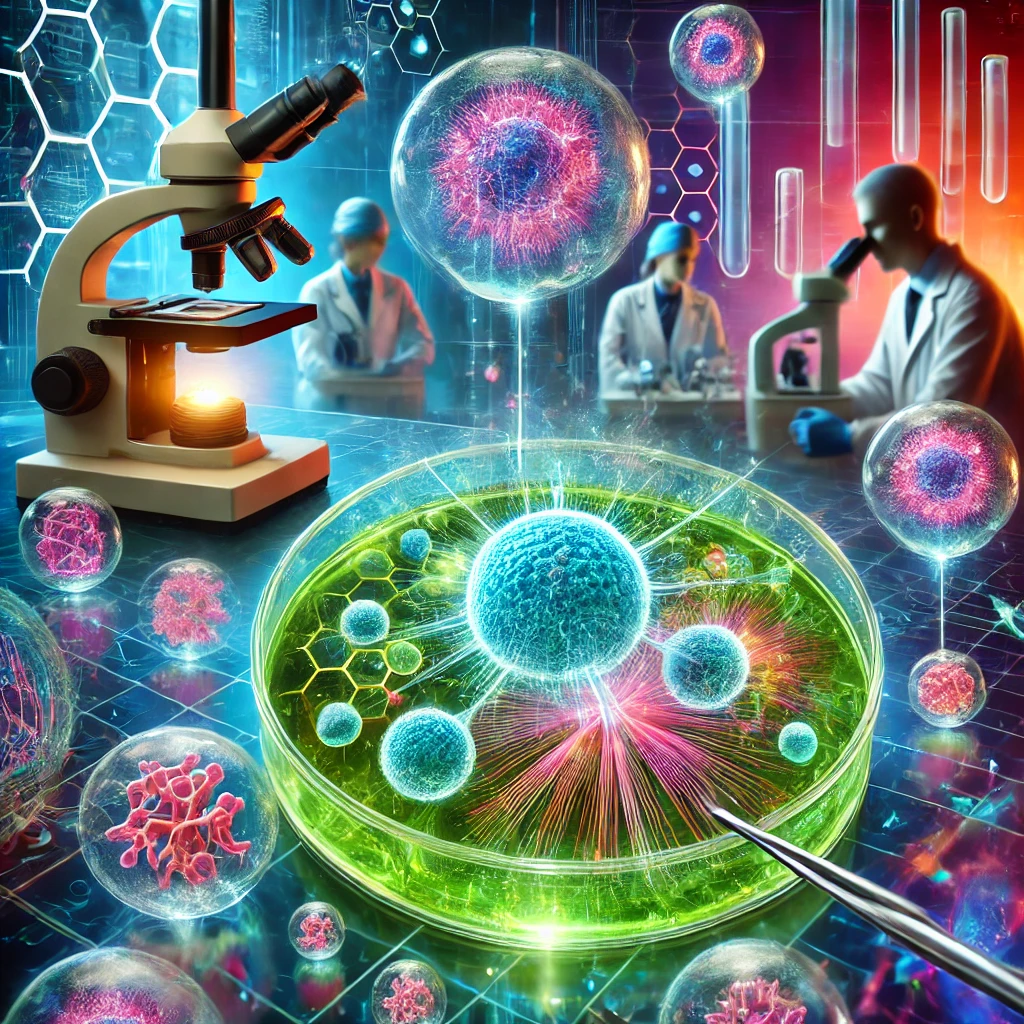Introduction: The Miraculous World of Stem Cells
Imagine a world where damaged tissues regenerate, incurable diseases become treatable, and even organs can be grown in laboratories. This isn’t science fiction—it’s the promise of stem cell research. These remarkable cells have the unique ability to transform into any cell type in the human body, making them a powerful tool in medicine and biotechnology.
In this article, we will explore what stem cells are, their types, applications, ethical concerns, and the latest breakthroughs that are shaping the future of healthcare.
What Are Stem Cells?
Stem cells are undifferentiated cells with the extraordinary ability to divide and develop into different specialized cell types. Unlike regular cells, which have a specific function (e.g., skin cells or liver cells), stem cells can remain unspecialized or transform into other cells when needed.
Key Characteristics of Stem Cells:
- Self-renewal: They can divide and create identical copies of themselves indefinitely.
- Potency: They have the potential to develop into different types of cells.
Types of Stem Cells
Stem cells are classified based on their source and ability to differentiate.
1. Embryonic Stem Cells (ESCs)
- Derived from embryos that are a few days old.
- Pluripotent: Can transform into any cell type in the body.
- Used in regenerative medicine but controversial due to ethical concerns.
2. Adult (Somatic) Stem Cells
- Found in tissues like bone marrow, brain, and skin.
- Multipotent: Limited to developing into related cell types (e.g., blood stem cells produce different blood cells).
- Less controversial but harder to isolate and grow.
3. Induced Pluripotent Stem Cells (iPSCs)
- Created by reprogramming adult cells to behave like embryonic stem cells.
- Pluripotent and can be used for research and therapy.
- Avoids ethical issues associated with ESCs.
4. Perinatal Stem Cells
- Found in amniotic fluid and umbilical cord blood.
- Exhibit properties of both embryonic and adult stem cells.
Breakthroughs and Applications of Stem Cell Research
The use of stem cells is revolutionizing medicine in multiple ways. Here are some of the most promising applications:
1. Regenerative Medicine and Tissue Engineering
- Stem cells are used to regenerate damaged tissues and repair organs.
- Scientists are working on bioengineered organs, such as artificial hearts and kidneys.
2. Treating Neurodegenerative Diseases
- Stem cells offer hope for diseases like Alzheimer’s, Parkinson’s, and spinal cord injuries by replacing lost neurons.
- Clinical trials have shown promising results in reducing symptoms and slowing disease progression.
3. Cancer Treatment
- Hematopoietic Stem Cell Transplants (Bone Marrow Transplants) help treat leukemia, lymphoma, and other blood disorders.
- Stem cells are being explored to create targeted cancer treatments with minimal side effects.
4. Diabetes Treatment
- Scientists are using stem cells to generate insulin-producing pancreatic cells, potentially curing Type 1 Diabetes.
5. Cardiovascular Disease Treatment
- Heart attack patients may benefit from stem cell therapies that regenerate heart tissues and improve heart function.
6. Personalized Medicine and Drug Testing
- Stem cells allow scientists to create patient-specific disease models to test new drugs, making treatments safer and more effective.
Ethical Considerations and Controversies
Despite the potential of stem cell research, it raises ethical and social concerns:
1. Use of Embryonic Stem Cells
- The destruction of human embryos for research purposes is a controversial issue, with moral and religious implications.
2. Genetic Modification and Cloning
- There are fears that stem cell advancements may lead to unethical practices like human cloning or genetic enhancements.
3. Accessibility and Cost
- Stem cell treatments are still expensive and experimental, raising concerns about their accessibility and commercialization.
Recent Advances and Future Prospects
1. Lab-Grown Organs
- Scientists have successfully grown mini-organs (organoids) for transplantation and research.
2. Stem Cells in Space
- NASA is exploring how stem cells behave in microgravity, which could improve cell therapies on Earth.
3. AI and Stem Cell Research
- Artificial Intelligence (AI) is helping predict stem cell behavior, improving efficiency in research and medical applications.
Research Paper References
- Trounson, A., & McDonald, C. (2015). Stem Cell Therapies in Clinical Trials: Progress and Challenges. Cell Stem Cell, 17(1), 11-22. https://doi.org/10.1016/j.stem.2015.06.007
- Hanna, J., et al. (2007). Induced Pluripotent Stem Cells: A New Frontier in Stem Cell Research. Science, 318(5858), 1917-1920. https://doi.org/10.1126/science.1151526
- Zakrzewski, W., et al. (2019). Stem Cells: Past, Present, and Future. Stem Cell Research & Therapy, 10(1), 68. https://doi.org/10.1186/s13287-019-1165-5










+ There are no comments
Add yours